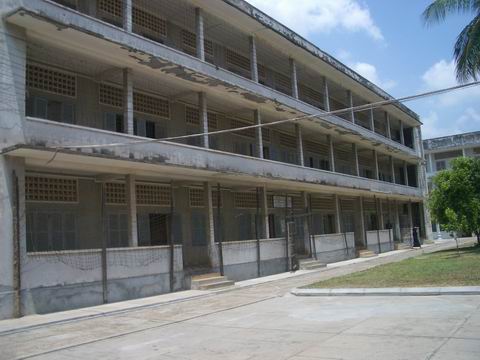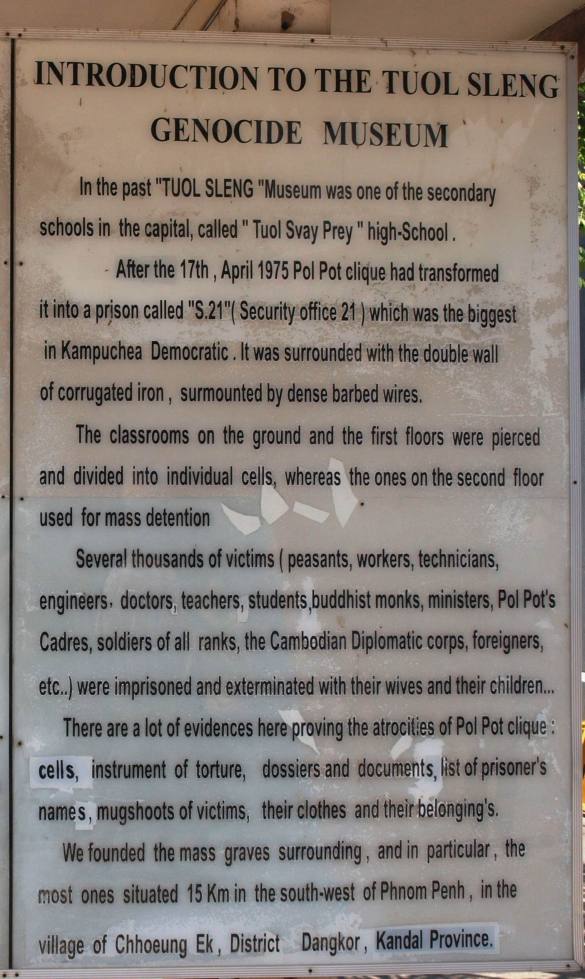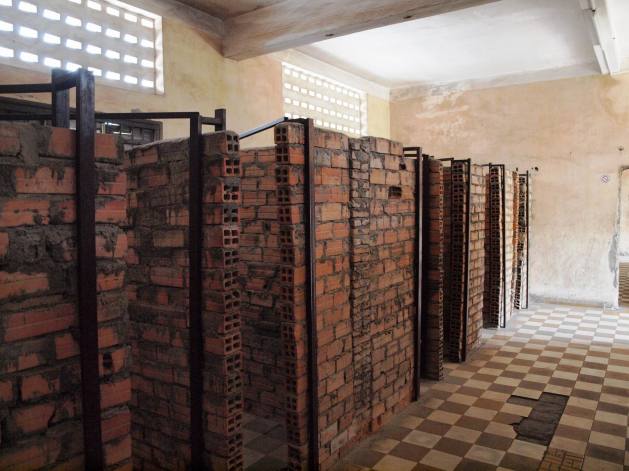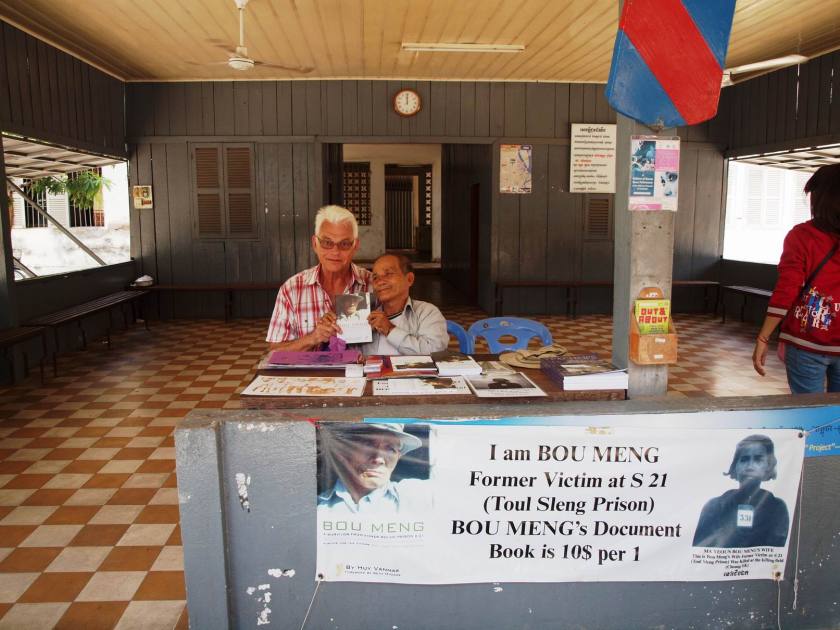While in Broome we took the opportunity to visit Willie Creek Pearl Farm, which was a fascinating time and very educational. It seems that ‘natural’ salt water pearls are no longer available, and all the pearls that we see are ‘cultured’ if they are the salt water variety. Fresh water pearls are imported mainly from China.
A small bus picked us up at 7.50 am for the 38 km (an hour’s drive) drive to the farm, which is outside the town of Broome.
It wasn’t long before we left the sealed road for the dirt road for the ‘bush’ trip to the farm. Most of the way to the farm seemed to be via the dirt road.


I loved the way the driver zig zaged to try and miss the bumps and the teeth shattering ‘corrugated’ parts. The ‘corrugated’ parts being created by the rainy season and baked rock hard by the sun, rather than man made metal.

Road junction – didn’t require traffic lights or pedestrian crossing.

As we drew closer to the shore the sand started to get lighter.

Over the rise and we were in a ‘river’ bed, which floods during the rainy season and during the equinox high tides.

The farm is just beyond the salt bush trees.
 A marine biologist gave us a very interesting talk on oysters . . . .
A marine biologist gave us a very interesting talk on oysters . . . .
The oyster above is an oyster with a disease and was dead as he opened the two shells to show us the inside. Nothing is wasted – the meat is exported to Asia, as is the shell. Up to the mid 50’s most buttons were made from mother of pearl i.e the inside shell of an oyster and Broome supplied most of the global raw materials for buttons. In the 1950’s plastic buttons replaced the traditional shell buttons and the industry collapsed.
To create a pearl a specialist opens a live oyster and places a small piece of Mississippi mussel in to the oysters gonard. Over time this irritant is covered by nacre (a slimy solution, showing white at the bottom of the shell) by the oyster to protect itself. After the operation the oyster is returned to a special area to recover (the oyster can be left out of the water for about eight hours without any ill effects.) It is placed in special nets and hung two metres below sea level in tidal water. They feed from nutrients in the water as the tide rises and falls. The oysters are cleaned regularly and checked for disease, and they are rotated so that the nacre coats the pearl area in an even regular way, which produces a round pearl. If it was left alone gravity would cause the pearl to grow ‘flatter’ at one end.
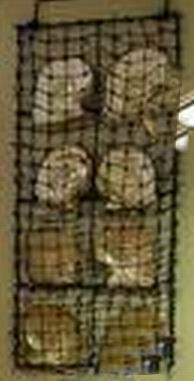
 As the talk went on the speaker took a small tool and gently looked to see if this oyster had a pearl -he did not go ‘digging’, even though the oyster was dead.
As the talk went on the speaker took a small tool and gently looked to see if this oyster had a pearl -he did not go ‘digging’, even though the oyster was dead.

I could see something and clicked away like mad.

It was a peal

The average peal can take two years to be produced, after which the oyster is opened and examined by a specialist, and if he thinks the oyster is in good health he will place the oyster back in the holding nets for another two years, after which he will check the pearl again for size and condition. Sometime he will leave it for a further two years to gain a larger pearl. After this talk, and realising the skill involved, I now know why pearls are so expensive.
 We took a boat trip out to one of the holding pens.
We took a boat trip out to one of the holding pens.
 The tide is coming in – note the level of the bank – the tide rises and falls 9.5 meters ( 31 feet) and the water is pristine.
The tide is coming in – note the level of the bank – the tide rises and falls 9.5 meters ( 31 feet) and the water is pristine.

The above pic is out of order (we are on our return), because we were only on the water a little over half an hour and you can see how high the water had risen in such a short time.

Below the surface the oyster nets hang from rope stretched between buoys.

We were shown an oyster that had been checked that morning only to be found that it had a disease on its outer shell. If not treated the disease would cause cracking in the shell, which would allow predators to get through the shell or the hinge and kill the oyster.
 The red area is the disease. This disease has been carried from over seas in contaminated fishing boats. The pearl industry has spent a great deal of time, energy and money looking for a ‘cure’ for the problem. They found it when they realised that if they increased the salinity this would kill the red disease without damaging the oyster. So by using swimming pool salt and rubbing it all over the out shell and then placing the oyster in a special brine over time the disease would die and not the oyster.
The red area is the disease. This disease has been carried from over seas in contaminated fishing boats. The pearl industry has spent a great deal of time, energy and money looking for a ‘cure’ for the problem. They found it when they realised that if they increased the salinity this would kill the red disease without damaging the oyster. So by using swimming pool salt and rubbing it all over the out shell and then placing the oyster in a special brine over time the disease would die and not the oyster.

Oyster boat used to check the health of the oysters. The ‘hinge’ or join of the two shells to make a single oyster can become encrusted with sea creatures and the oyster farmer employs back packers to use a special tool to scrape the foreign matter from the hinge area. The back packers live on a mother ship and use the above boats for close work with the nets. They may be on the mother ship for three or four weeks, with the occasional run ashore. The act of scraping sounds a simple job, but we were told that within ten minutes the scraper’s arm starts to ache and it goes on aching for the rest of the day. I held the tool and it was quite heavy, and with actually dragging it along an encrusted oyster shell I could understand the arm ache.

At the end of the tour we were invited for tea and cake and Maureen met their tame crocodile.
Later we were shown around the ‘shop’ and given a talk on how to value pearls via the shape, size, colour and complexion. (SSCC) and the young man picked Maureen to were a particular string.

We were asked to guess the value of various pearls and necklaces. The above around Maureen’s neck had a value of just over $35,000. What a String of Pearls
Overall it was a great day out.




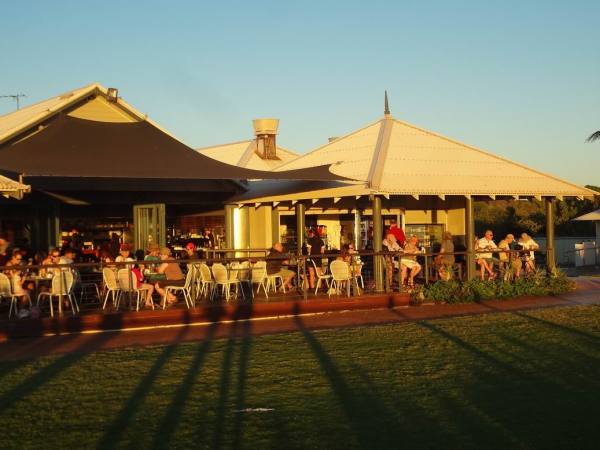
 It’s started with the mushroom affect.
It’s started with the mushroom affect.
 I used a zoom to see what would happen – not much.
I used a zoom to see what would happen – not much.
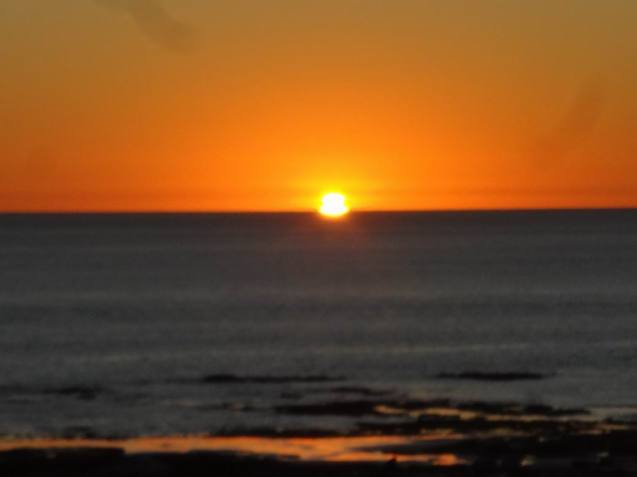




 We were soon airborne
We were soon airborne





 Flying over the dry sandy area and the shadow of our helicopter.
Flying over the dry sandy area and the shadow of our helicopter.









 A marine biologist gave us a very interesting talk on oysters . . . .
A marine biologist gave us a very interesting talk on oysters . . . .
 As the talk went on the speaker took a small tool and gently looked to see if this oyster had a pearl -he did not go ‘digging’, even though the oyster was dead.
As the talk went on the speaker took a small tool and gently looked to see if this oyster had a pearl -he did not go ‘digging’, even though the oyster was dead.


 We took a boat trip out to one of the holding pens.
We took a boat trip out to one of the holding pens. The tide is coming in – note the level of the bank – the tide rises and falls 9.5 meters ( 31 feet) and the water is pristine.
The tide is coming in – note the level of the bank – the tide rises and falls 9.5 meters ( 31 feet) and the water is pristine.


 The red area is the disease. This disease has been carried from over seas in contaminated fishing boats. The pearl industry has spent a great deal of time, energy and money looking for a ‘cure’ for the problem. They found it when they realised that if they increased the salinity this would kill the red disease without damaging the oyster. So by using swimming pool salt and rubbing it all over the out shell and then placing the oyster in a special brine over time the disease would die and not the oyster.
The red area is the disease. This disease has been carried from over seas in contaminated fishing boats. The pearl industry has spent a great deal of time, energy and money looking for a ‘cure’ for the problem. They found it when they realised that if they increased the salinity this would kill the red disease without damaging the oyster. So by using swimming pool salt and rubbing it all over the out shell and then placing the oyster in a special brine over time the disease would die and not the oyster.


 I didn’t see this view until the following morning.
I didn’t see this view until the following morning.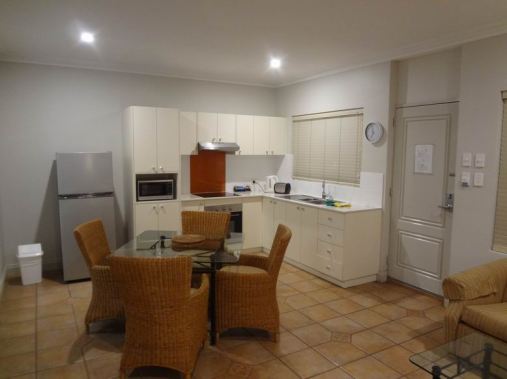







 Lie in the pool or on a lounger and listen to the waterfall.
Lie in the pool or on a lounger and listen to the waterfall.











 It weighs one kilogram and has a 0.54 carat gemstone
It weighs one kilogram and has a 0.54 carat gemstone I told you that kangaroos roamed the streets of Perth!
I told you that kangaroos roamed the streets of Perth!


 Business men through the ages going back in time . .
Business men through the ages going back in time . .
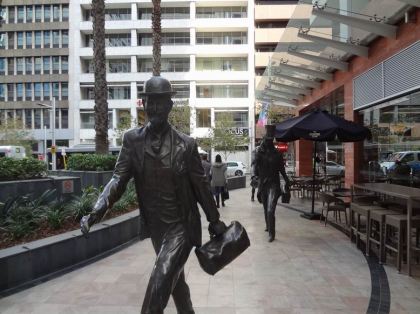








 Part of the city framed.
Part of the city framed.

 Government House from street level.
Government House from street level.













